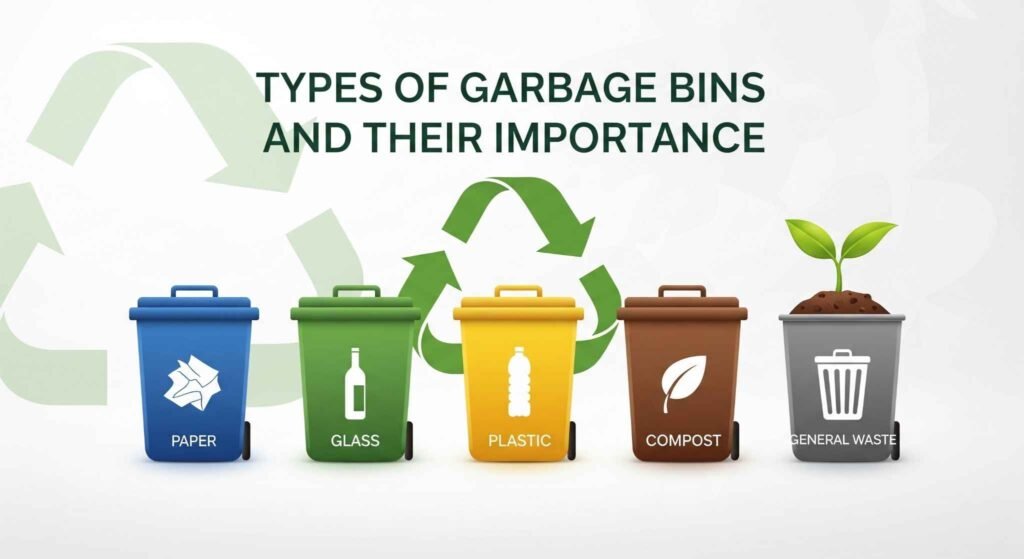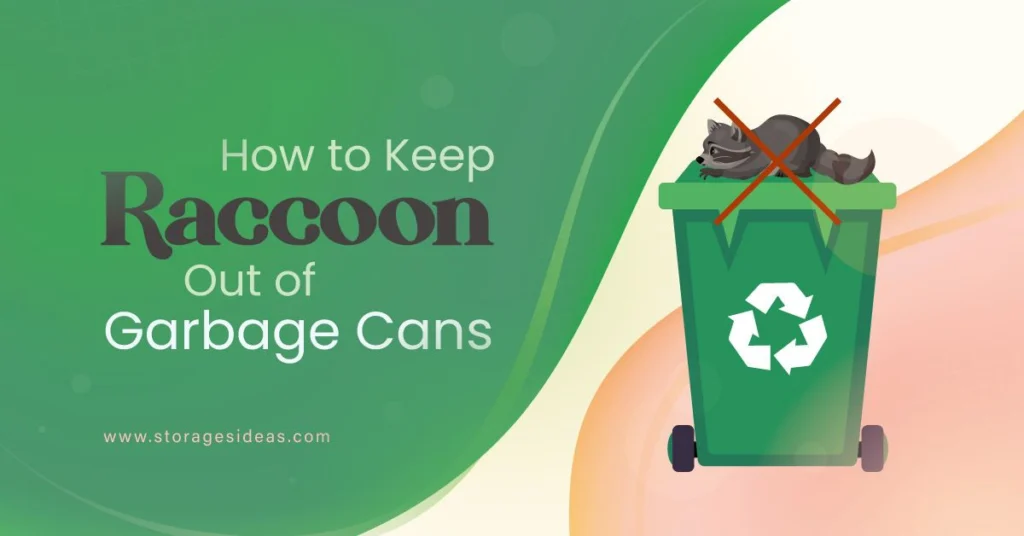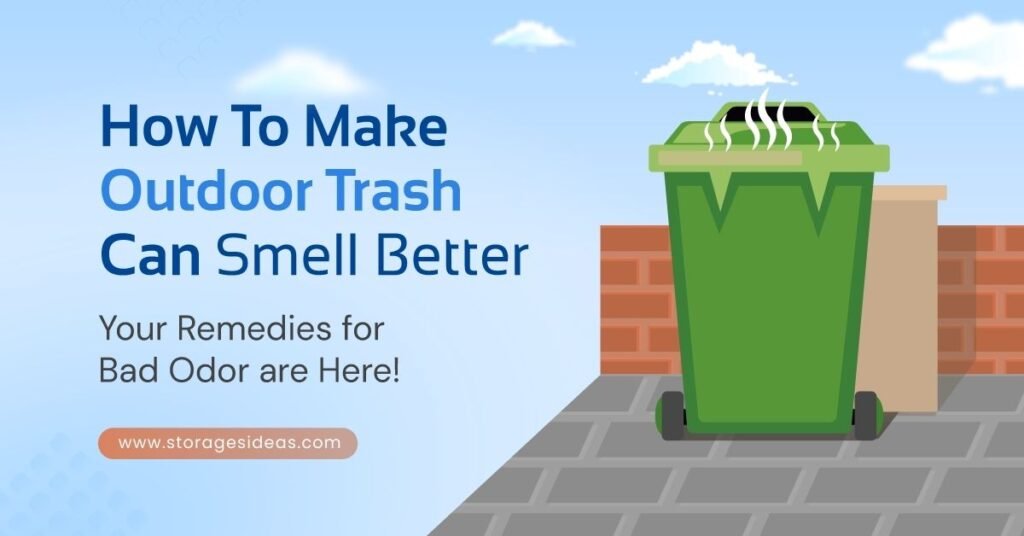Proper waste management is a key factor in maintaining cleanliness, hygiene, and sustainability in communities. Garbage bins play a crucial role in ensuring that waste is collected, segregated, and disposed of in a way that reduces environmental harm. By understanding the different types of garbage bins and their specific uses, individuals and organizations can improve recycling efforts, reduce landfill waste, and contribute to a cleaner environment.
Types of Garbage Bins
Garbage bins come in various sizes, designs, and purposes. Using the right type of bin for the right kind of waste is essential to maximize recycling, composting, and safe disposal.
1. Standard Curbside Bins
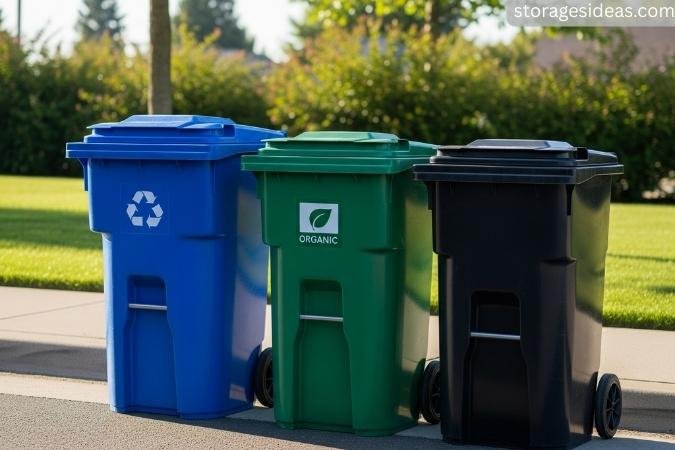
Standard curbside bins are the most common type of garbage container found in households. They are typically provided by municipal authorities or waste management companies.
- Design Features: Most curbside bins have wheels and sturdy handles, making them easy to roll to the curb even when full.
- Color Coding: Many municipalities use different colors for specific waste types (e.g., blue for recycling, green for general waste, brown for yard waste).
- Odor Control: Some bins come with tightly sealed lids or odor-reducing filters to minimize bad smells.
- Sizes and Materials: Available in 32 to 96 gallons, usually made from durable plastic or metal.
- Usage: General household waste, such as food wrappers, non-recyclable plastics, and small packaging materials.
- Tips: Always cover the bin lid to avoid attracting pests and prevent litter from spreading.
- Benefits: Easy to move, suitable for weekly waste collection, and helps keep neighborhoods clean.
2. Recycling Bins

Recycling bins are specifically designed for separating recyclable materials such as paper, cardboard, plastic, and glass.
- Sizes & Materials: Available in small indoor containers (10–20 gallons) and larger curbside bins (30–96 gallons). Typically made from durable, recyclable plastic or metal.
- Labeling & Symbols: Many recycling bins come with clear labels or the universal recycling symbol to help residents identify the correct bin quickly.
- Color Coding: Blue for paper, green for glass, and yellow for plastics and metals.
- Community & Office Use: Widely placed in schools, offices, parks, and public spaces to encourage sustainable practices outside the home.
- Accessibility: Some designs are made with wider openings or color-blind-friendly symbols for inclusivity.
- Usage: Avoid placing contaminated or wet waste in recycling bins, as it can reduce the quality of recyclables.
- Benefits: Supports environmental conservation, reduces landfill dependency, and ensures proper recycling processes.
- Maintenance: Keep bins clean and free from food waste to avoid contamination. This ensures materials are fully recyclable.
- Tips: Flatten cardboard boxes and rinse plastic containers before placing them in recycling bins.
3. Composting Bins
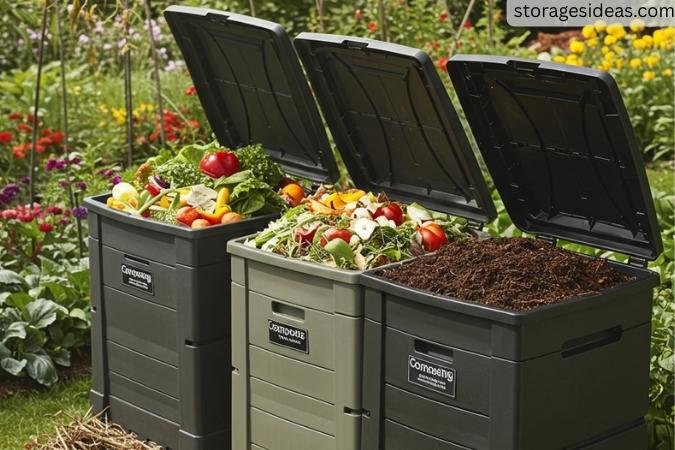
Composting bins are for organic waste, including food scraps, fruit peels, vegetables, and garden waste.
- Sizes & Materials: Available from small 5–10 gallon indoor bins to large 100+ gallon outdoor models. Made of plastic, wood, or metal, depending on durability needs.
- Decomposition Speed: Composting bins help regulate airflow and moisture, which speeds up the breakdown of organic matter.
- Odor Control: Many composting bins are designed with ventilation systems or charcoal filters to reduce unpleasant smells.
- Soil Health: The compost produced enhances soil fertility, improves water retention, and supports healthier plant growth.
- Usage: Used in homes, community gardens, and farms to produce nutrient-rich compost for soil enrichment.
- Benefits: Reduces methane emissions from landfills, enriches garden soil, and encourages sustainable living.
Tips: Avoid adding meat, dairy, or oily waste as it can attract pests and slow down decomposition. Balance “greens” (food scraps, fresh garden waste) with “browns” (leaves, cardboard, paper). Turn or aerate compost regularly to maintain airflow. Keep the bin in a shaded but well-ventilated area.
4. Industrial Bins
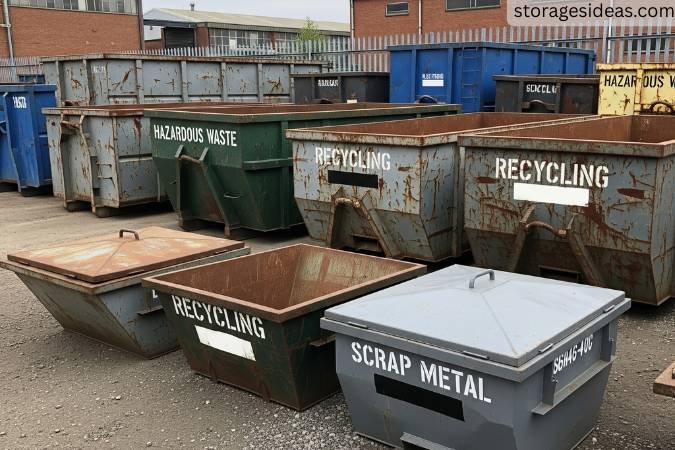
Industrial bins are large, heavy-duty bins designed for factories, construction sites, and large businesses.
- Materials: Constructed from heavy-duty steel or reinforced plastic, ensuring durability under extreme conditions.
- Design Features: Equipped with wheels or forklift pockets for easy movement. Some models come with lockable lids to secure waste. Roll-off containers are used for construction and demolition waste.
- Types of Industrial Bins: Front-load bins – commonly used by businesses with regular waste pickup. Rear-load bins – taller, designed for compact storage areas. Roll-off dumpsters – large, open containers for construction and demolition projects.
- Waste Segregation Options: Can be used with color coding or labeling for separating recyclables, hazardous waste, or general industrial waste.
- Safety Considerations: Must be placed on level ground to avoid tipping. Overflowing bins can cause workplace hazards and attract pests.
- Usage: Handles commercial waste like packaging materials, construction debris, and large quantities of non-hazardous waste.
- Benefits: Durable and large enough to handle significant amounts of waste, making disposal efficient.
- Tips: Regularly monitor fill levels to avoid overflow and ensure safety.
5. Smart Bins
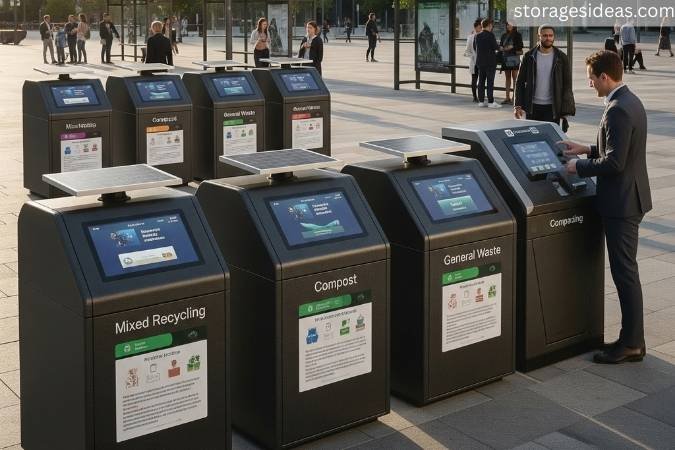
Smart bins are a modern solution in urban areas. They use sensors to monitor waste levels and notify authorities when collection is needed.
- Technology Features: Built-in sensors detect fill levels and send real-time alerts. Some models include solar-powered compactors that compress waste, increasing capacity by up to 5–8 times.
- Connectivity: Integration with mobile apps or cloud-based dashboards allows city managers to track bin status instantly. Smart bins can be connected to IoT platforms for centralized monitoring.
- Design & Materials: Weather-resistant construction ensures durability in outdoor urban spaces. Some are designed with touchless openings to improve hygiene in public areas.
- Security Features: Fire-resistant materials in some models reduce safety risks. Lockable lids prevent unauthorized access or vandalism.
- Cost Efficiency: Long-term savings in operational expenses for municipalities and businesses. Reduces labor costs by optimizing collection schedules.
- Data Insights: Provides valuable data on waste generation patterns, helping cities improve sustainability strategies. Helps authorities plan for recycling programs based on real waste trends.
- Community Use: Ideal for airports, shopping malls, stadiums, and tourist areas. Enhances cleanliness and convenience in smart city projects.
- Usage: Ideal for cities, shopping centers, and public parks.
- Benefits: Reduces unnecessary collection trips, prevents overflow, and saves costs.
- Tips: Integrate with mobile apps or city management systems for optimal efficiency.
6. Medical Waste Bins

Medical waste bins are designed for hospitals, clinics, and laboratories.
- Types of Medical Waste Bins: Sharps containers (needles, syringes, blades), Biohazard bins (contaminated dressings, gloves, swabs), Pharmaceutical bins (expired medications), Pathological bins (human tissue, organs, lab samples).
- Color Coding: Yellow – infectious waste. Red – sharps. Blue – pharmaceuticals. Black – general non-infectious medical waste.
- Materials: Puncture-proof, leak-proof, chemical-resistant plastic. Some have foot pedals for hands-free use.
- Regulations: Governed by local health authorities, WHO, OSHA.
- Safety Features: Tamper-proof lids, hazard markings, needle-stick injury prevention.
- Disposal: Collected and sent for incineration, autoclaving, or chemical treatment.
- Benefits: Prevents contamination, reduces infection risk, ensures compliance.
- Tips: Never mix medical waste with regular trash.
7. Hazardous Waste Bins
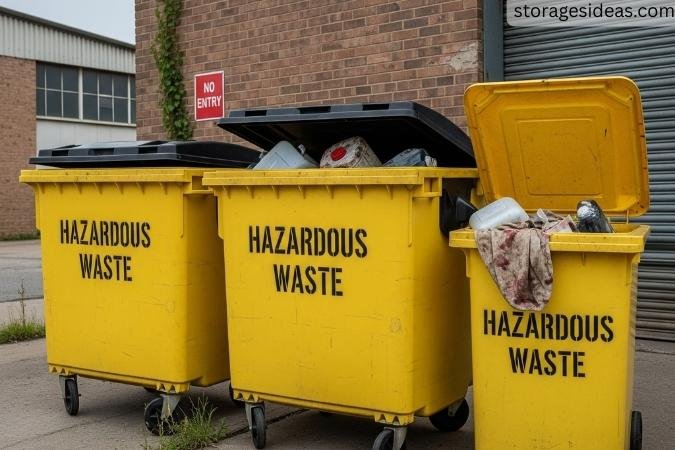
Hazardous waste bins handle chemicals, batteries, paints, and toxic substances.
- Design: Corrosion-resistant, leak-proof materials. Airtight lids. Flame-resistant options available.
- Color Coding: Red/orange bins with hazard symbols.
- Sizes: Household-sized or industrial drums (200 liters).
- Regulations: Must follow EPA/OSHA or local authority guidelines.
- Safety: Lockable lids, spill-proof, secondary containment trays.
- Benefits: Protects health and environment.
- Tips: Always label clearly and store safely.
8. E-Waste Bins
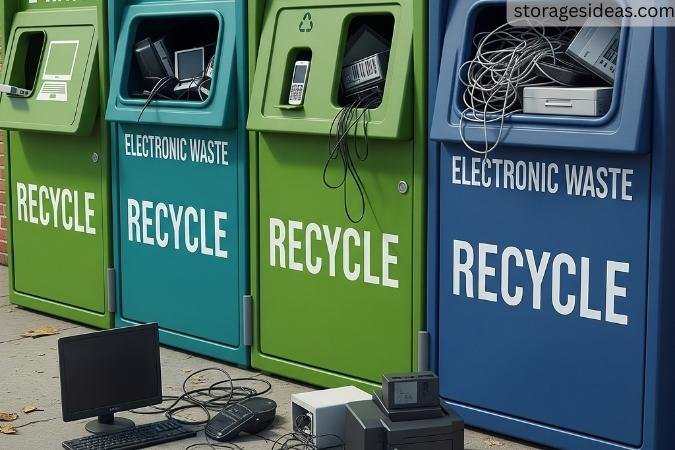
Electronic waste bins are used for old electronic devices such as smartphones, computers, and batteries.
- Design: Durable, corrosion-resistant plastic/metal. Separate compartments for batteries, cables, devices.
- Symbols: Blue/green with e-waste labels and recycling icons.
- Collection: Managed by certified recyclers, part of e-waste drives.
- Benefits: Prevents toxic elements like mercury and lead from polluting soil/water.
- Tips: Always wipe personal data before disposal.
9. Paper/Cardboard Bins

Paper bins are common in schools, offices, and libraries.
- Design: Plastic, metal, or recycled material. Some have compartments for paper vs. cardboard.
- Usage: For notebooks, newspapers, cardboard.
- Benefits: Supports recycling, reduces deforestation.
- Tips: Keep paper dry and uncontaminated.
10. Outdoor/Street Bins
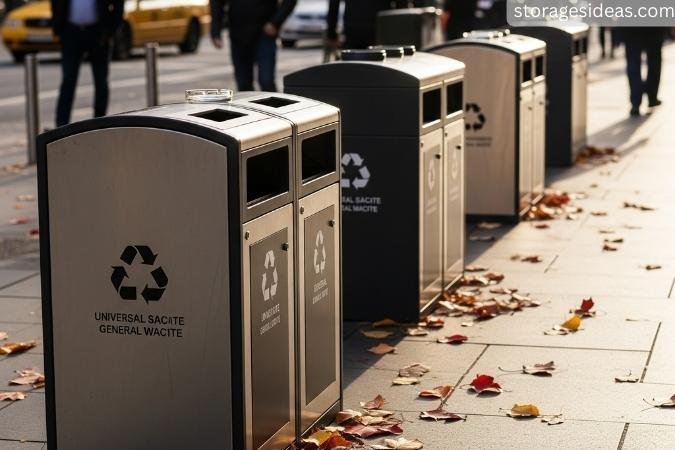
Outdoor or street bins are placed in parks, streets, and public spaces.
- Design: Heavy-duty, weather-resistant steel or reinforced plastic. Some with separate waste compartments.
- Symbols: Color-coded, often with multilingual signage.
- Collection: Emptied regularly by sanitation teams. Some smart bins alert when full.
- Benefits: Keeps public areas clean, reduces littering, prevents pests.
- Tips: Ensure animal-proof and weather-resistant design.
🌍 Importance of Garbage Bins
✅ Promotes Hygiene
Proper waste disposal prevents the spread of diseases and keeps public and private spaces clean.
✅ Supports Recycling
Using specific bins for recyclables ensures that materials are processed properly, reducing environmental strain.
✅ Environmental Conservation
Segregated waste reduces landfill usage, lowers greenhouse gas emissions, and protects soil and water resources.
✅ Enhances Aesthetics
Well-maintained bins contribute to the beauty and cleanliness of neighborhoods, parks, and streets.
✅ Prevents Animal Infestation
Covered bins stop animals, rodents, and insects from scattering waste.
✅ Reduces Waste Management Costs
Efficient bin use lowers collection time, transport costs, and landfill expenses for municipalities.
✅ Encourages Responsible Behavior
Visible and categorized bins educate communities to sort waste and adopt sustainable habits.
✅ Supports Legal Compliance
Proper bin usage ensures compliance with local regulations, preventing fines and penalties.
✅ Promotes Community Awareness
Well-placed bins increase public awareness about the importance of waste segregation and recycling.
✅ Reduces Pollution
Proper disposal of hazardous, electronic, and chemical waste prevents soil, water, and air pollution.
Conclusion
Garbage bins are much more than simple containers—they are the backbone of effective waste management. Understanding the types of bins and using them correctly ensures hygiene, supports recycling, reduces pollution, and fosters a cleaner, safer, and sustainable environment. Whether for homes, offices, or public spaces, proper bin usage empowers communities to take responsibility for their waste and protect the planet.
FAQ (Frequently Asked Questions)
Q1: How often should garbage bins be emptied?
Residential bins: typically once a week. Industrial or street bins: daily or multiple times per week, depending on usage.
Q2: Can all plastics go into recycling bins?
No. Only plastics labeled with recycling symbols should go in recycling bins. Other plastics may require special disposal.
Q3: Why are smart bins important?
Smart bins optimize waste collection, reduce overflow, save costs, and maintain urban cleanliness efficiently.
Q4: How should hazardous or medical waste be disposed of at home?
Do not mix with general trash. Use designated collection points or contact local waste management authorities.

